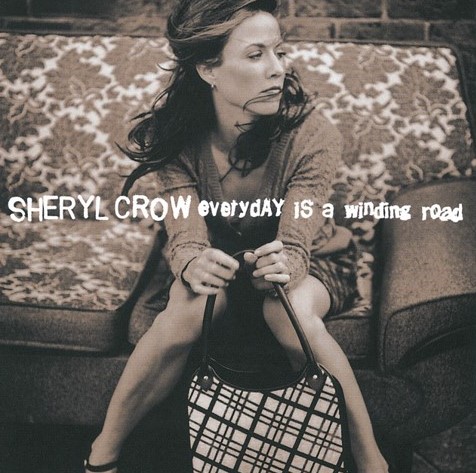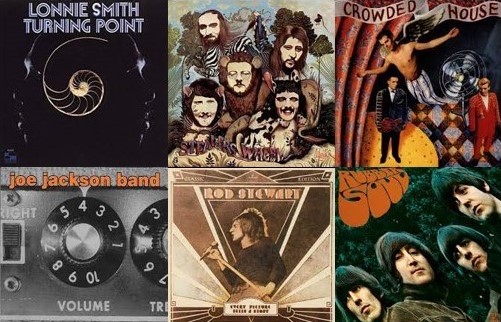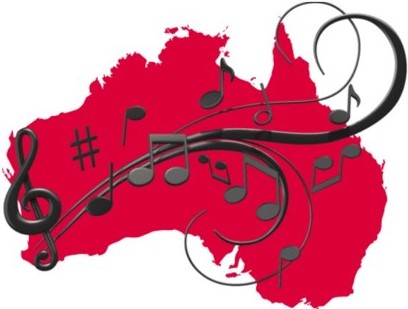Happy hump day and welcome to another installment of Song Musings where I take a closer look at tunes I’ve only mentioned in passing or not covered at all. Today’s pick falls into the former category and is by an artist I’ve dug since she busted on the scene in 1993 with her successful debut album Tuesday Night Music Club: Everyday Is a Winding Road by Sheryl Crow.
Co-written by Crow, Jeff Trott and Brian McLeod, the song first appeared on her eponymous sophomore album released in September 1996. It also became the record’s second single in November of the same year. While it didn’t match the sales success of lead single If It Makes You Happy, its chart performance was close to its predecessor. Both tunes topped the Canadian charts. In the U.S., Everyday Is a Winding Road climbed to no. 11 on the Billboard Hot 100. It did best on the Pop Airplay chart where it peaked at no. 4. Elsewhere, it hit the top 20s in the UK (no. 12), Japan (no. 20) and Iceland (no. 14).
Everyday Is a Winding Road was one of five singles that helped drive the success of Crow’s second album. From a charts perspective, the record did best in Switzerland, the UK, the U.S., Sweden, Austria and Belgium where it reached no. 3, no.5, no. 6, no. 8, no. 8 and no. 10, respectively. It also placed in the top 20 in Canada (no. 12), Australia (no. 12), Germany (no. 17) and Norway (no. 20). Sheryl Crow has sold the most copies in the U.S. and the UK where it has been certified 3X Platinum.
When releasing her 11th album Threads in August 2019, which I reviewed here at the time, Crow said this was her last such full-length studio effort. She cited changing habits, especially among young listeners who prefer putting together playlists with songs by their favorite artists rather than listening to entire albums. At the same time, she reassured fans she wasn’t planning to retire, and so far, there are indeed no signs Crow is calling it quits altogether. Going back to Everyday Is a Winding Road, here’s a nice live performance of the tune from 2010 on the then-American TV show Late Show with David Letterman.
Following is some additional background on the tune from Songfacts:
This bit of fortune cookie wisdom was written by Sheryl Crow along with her collaborators Jeff Trott and Brian MacLeod. The trio wasn’t thrilled with it when they wrote the song, so they were happy to give it up for the 1996 film Phenomenon, starring John Travolta.
Once they started stripping it down at the request of the movie’s music supervisor, something great began to emerge. Trott told Songfacts: “We realized by pulling back all that stuff that, wow there actually is a really good song in there, and it’s just being covered with layer, upon layer, of instruments.”
The song debuted in the movie, but didn’t appear on the soundtrack. The film was released in July 1996 and the song was included on Crow’s self-titled sophomore album, which was issued in September…
…Crowded House lead singer Neil Finn provided backing vocals. The Australian band’s former drummer, Paul Hester, was the inspiration for the song. Crow explained before a Top of the Pops performance in 2003: “He inspired the song because he was so… he was such a character and so full of life, and it’s basically about the search for the meaning of life.”…
…Crow elaborated on the song’s theme in an interview with CMT: “‘Everyday is a Winding Road’ started out as kind of a road song, and it really wound up being about being in the moment and not always looking to the next moment and analyzing things. As I look at this record, stepping away from it, I realize thematically a lot of it is about levity, finding levity in life and balance and trying to figure out how to make all things work simultaneously without grand disruption. That’s kind of what the song is about. It’s about jumping in a truck with a guy who just lives life every minute, by the minute. Every once in a while, I have to catch myself and remind myself that life is right now. It’s not two minutes from now.”
This was nominated for Record of the Year at the 1998 Grammy Awards, but it lost to Shawn Colvin’s “Sunny Came Home.”
This was also featured in the 2000 biographical drama Erin Brockovich, starring Julia Roberts.
Prince covered this on his 1999 album, Rave Un2 the Joy Fantastic.
Sources: Wikipedia; Songfacts; YouTube



